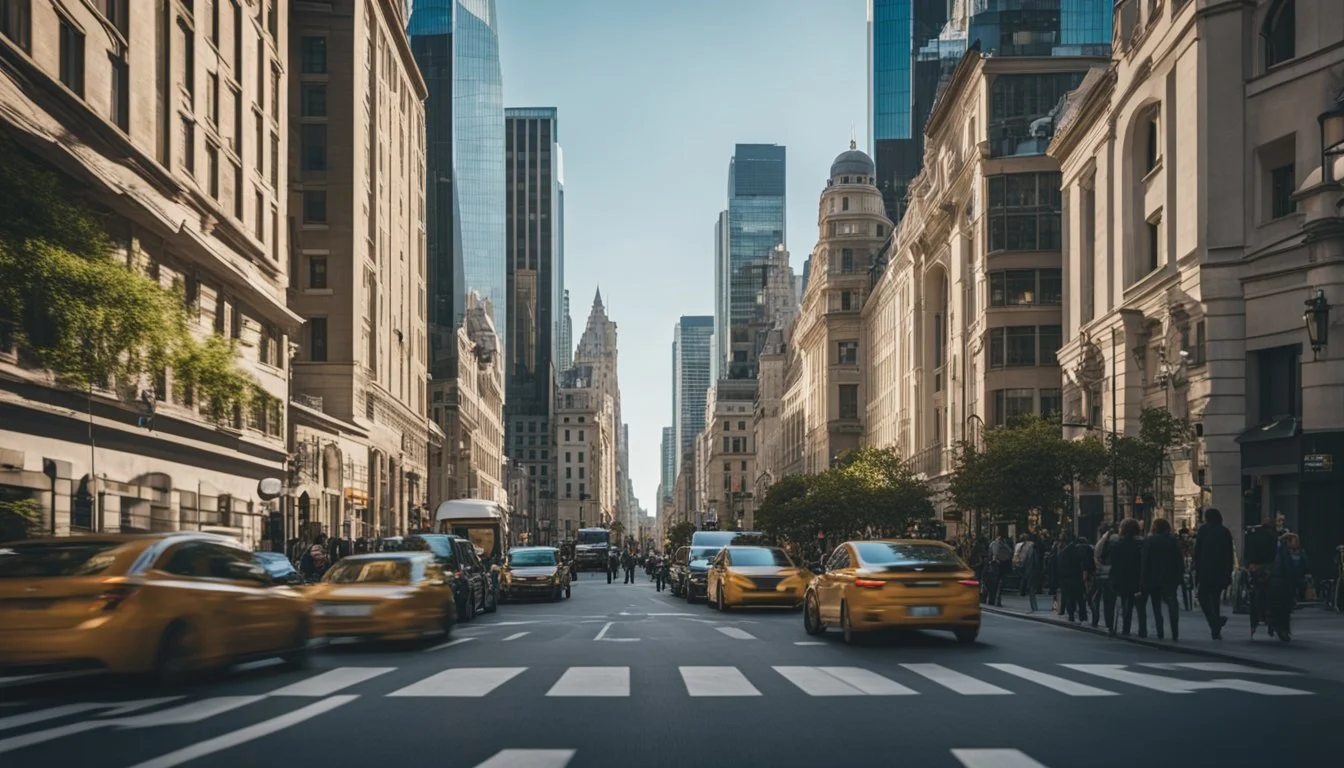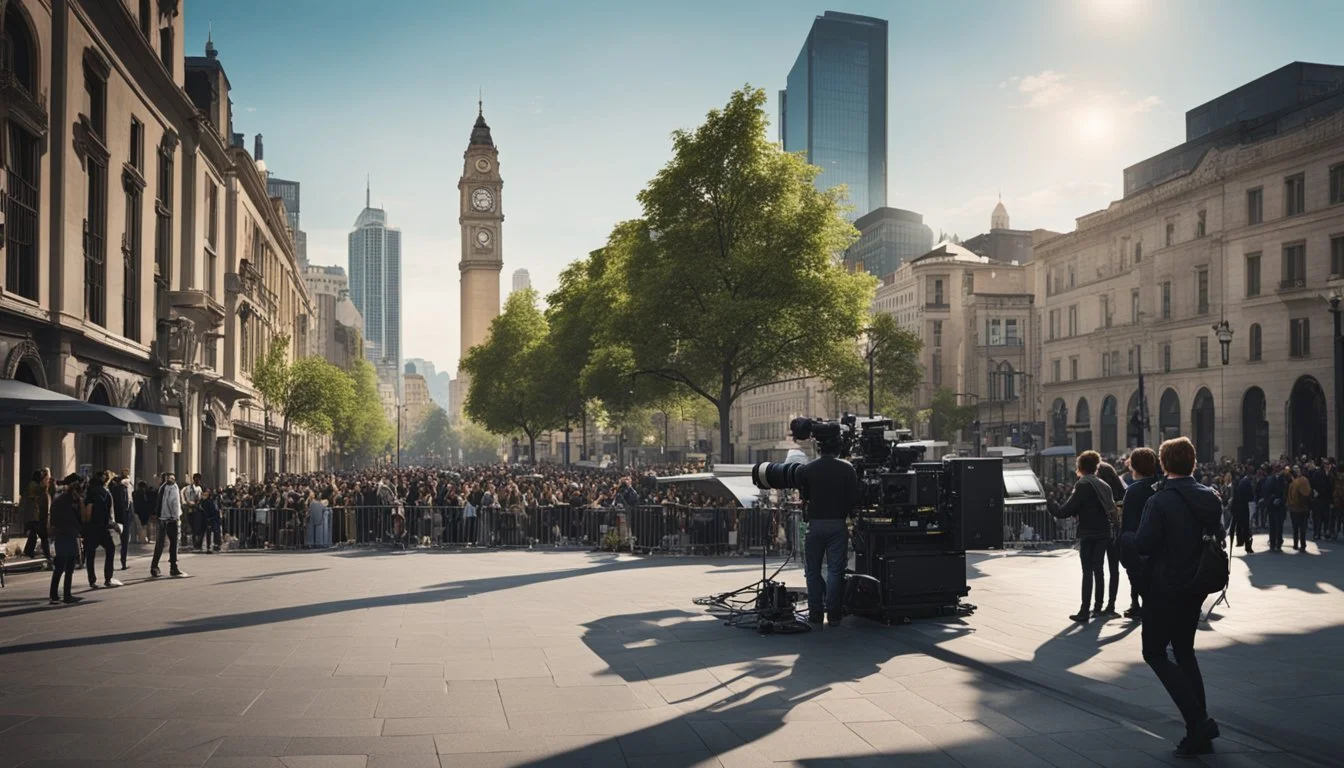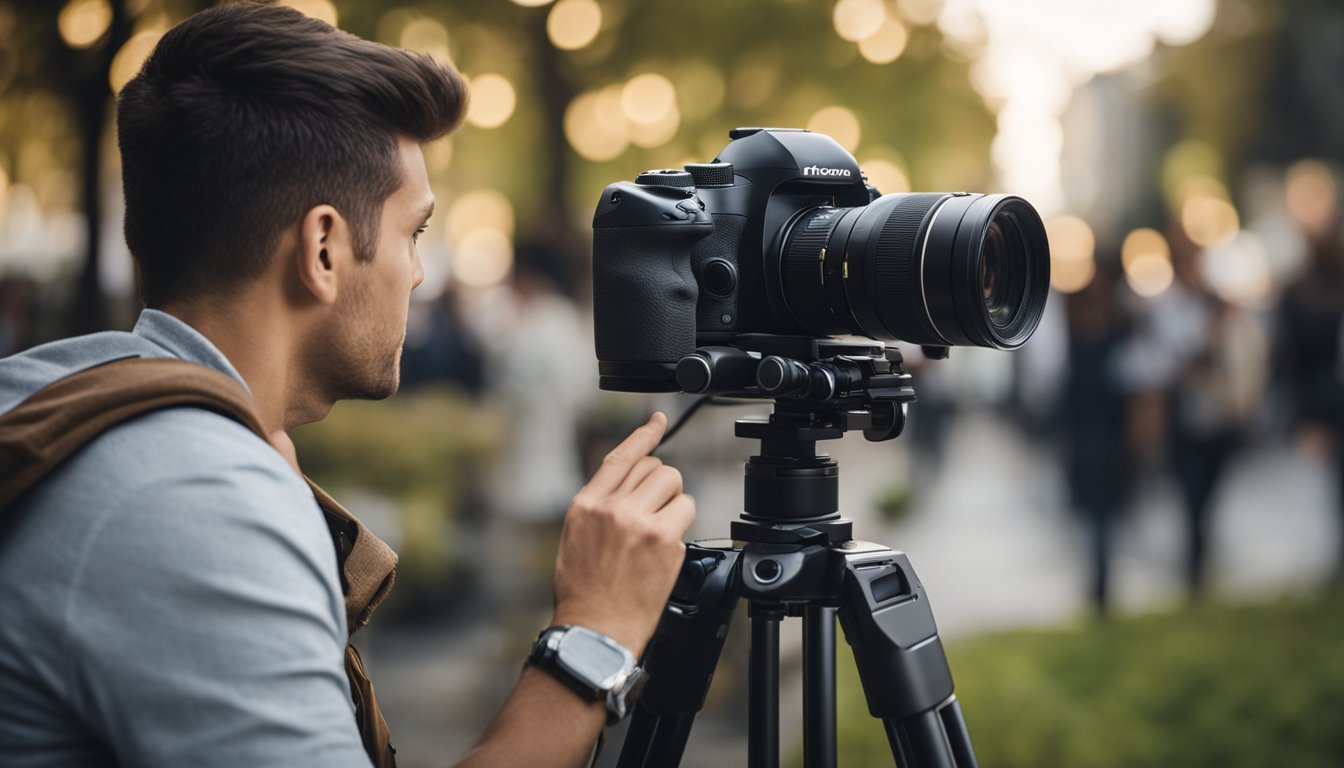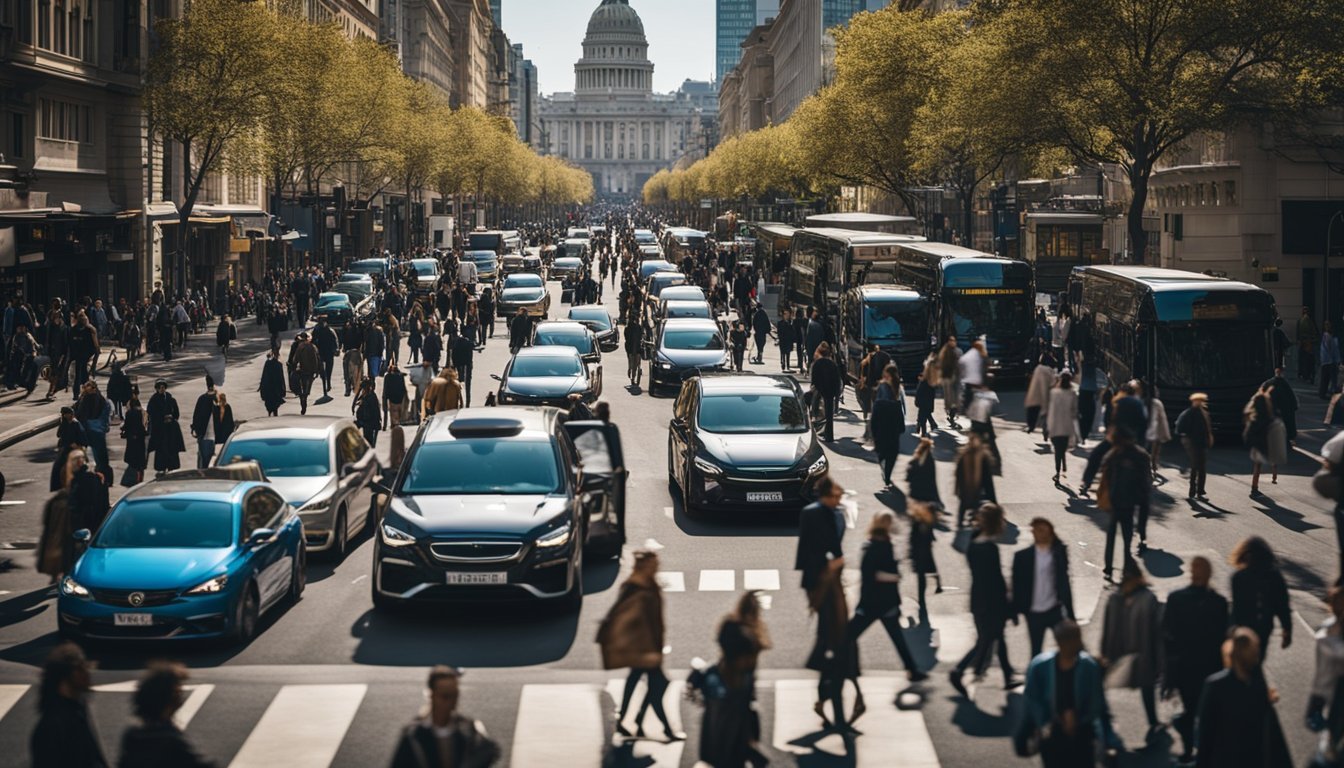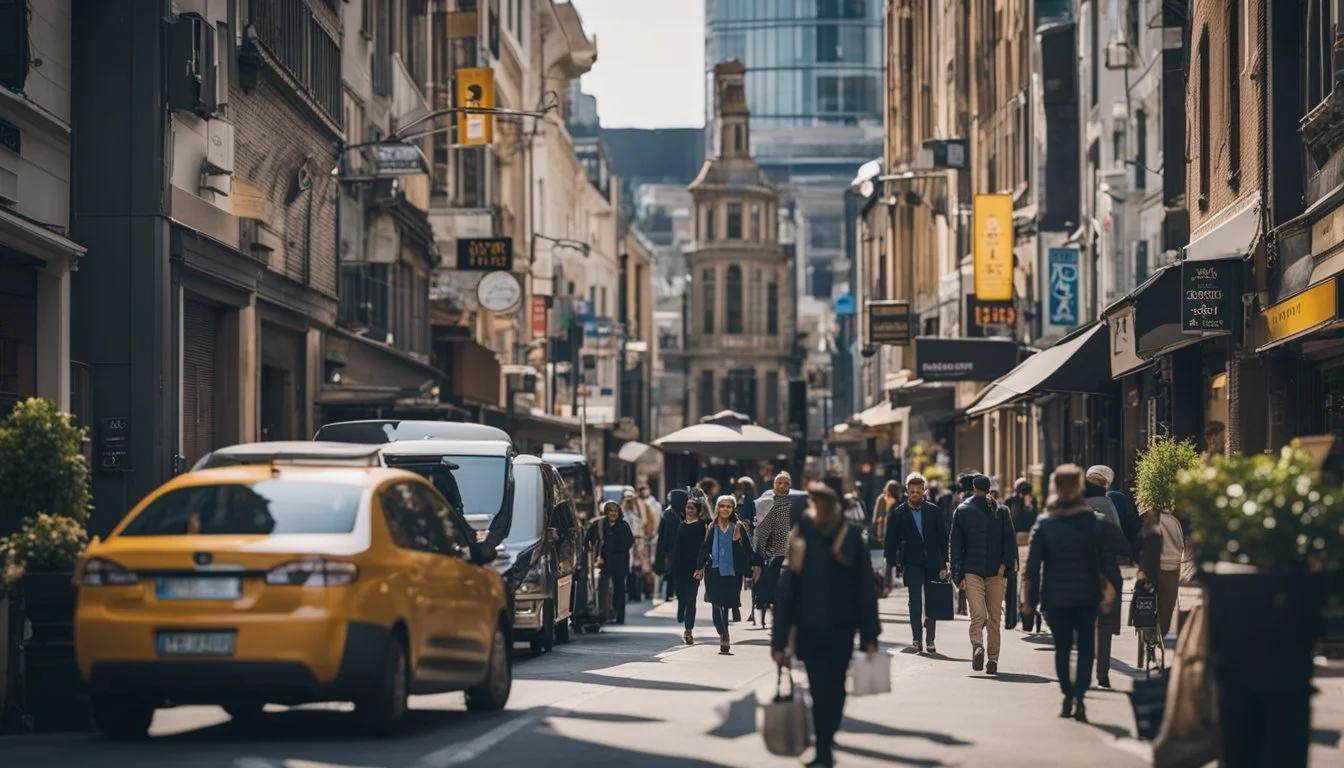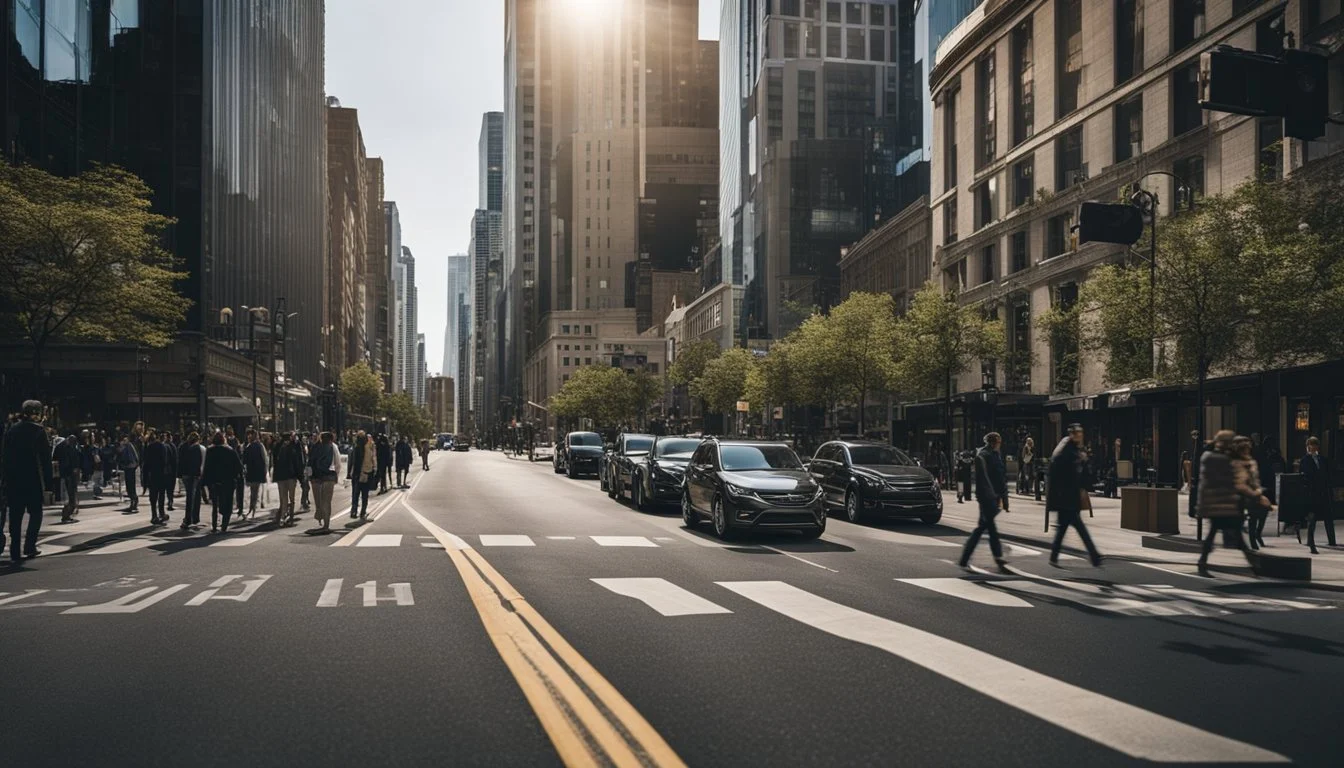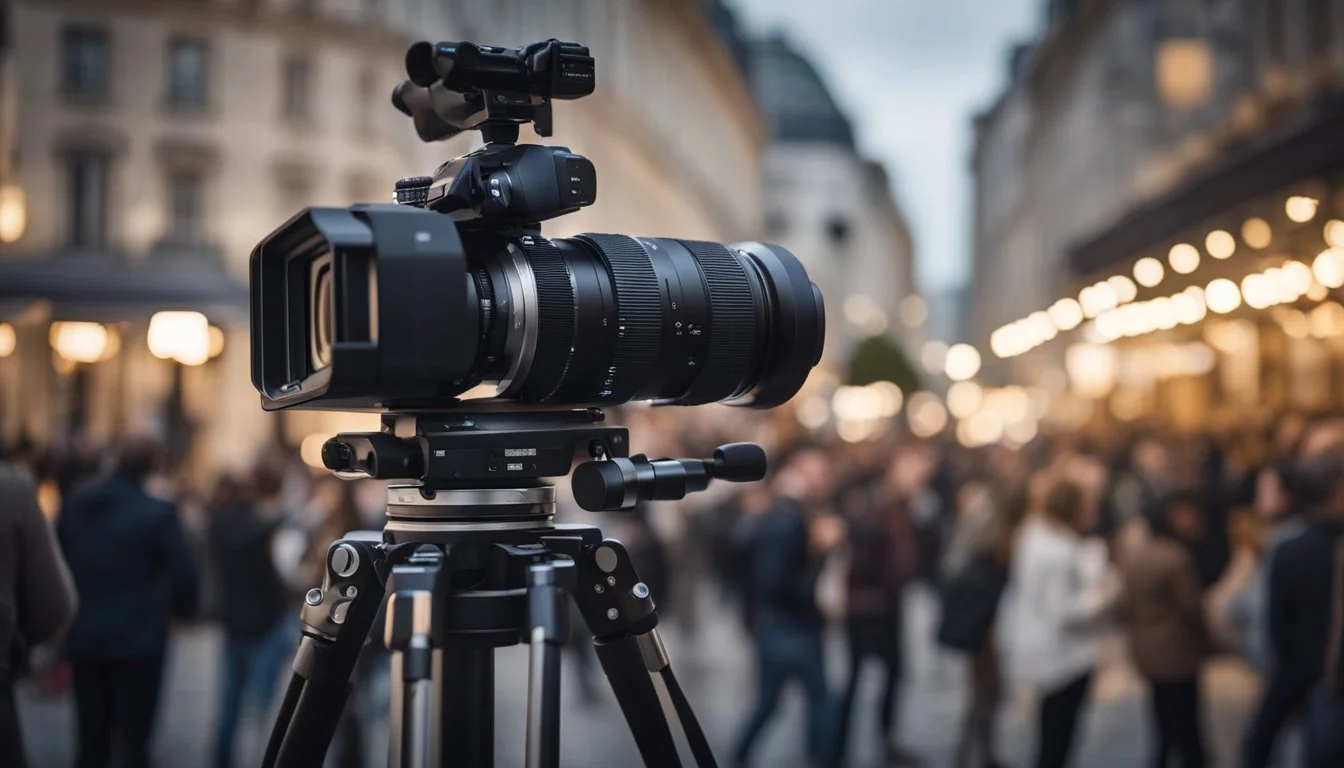16 Essential Tips for Filming in Public Places Without a Permit
A Guide to Seamless Shoots
Filming in public places without a permit can be a daunting task, yet understanding the essential tips and strategies can help filmmakers navigate this challenge. Whether it's a small indie project or a budding YouTube channel, many filmmakers find themselves needing to shoot in public areas without the budget or time to secure permits.
Knowing the key dos and don'ts of filming in public spaces can save a project from legal issues and logistical nightmares. This article will explore 16 crucial tips to help you capture the best shots while staying within the bounds of the law and maintaining good relations with the public.
1) Scout Your Location
Scouting a location is a critical first step when planning to film in public places without a permit. It allows the filmmaker to assess the suitability of a location for their vision.
During the scouting process, it is important to visit the location at the same time of day that the shoot will occur. This helps in understanding the natural lighting conditions and foot traffic.
Evaluate the sound environment. Take note of any ambient noise that could interfere with the recording.
Pay attention to accessibility. Ensure that the location is easy to reach for both the crew and equipment. Check for potential obstructions that might complicate the setup and shooting process.
Safety is paramount. Identify any hazards that could pose a risk to the team. This includes checking for uneven surfaces, loose debris, and potential weather-related issues.
Considering the legal aspects is also crucial. Research whether filming in the chosen public area has any specific restrictions or if there are local ordinances that could impact the shoot.
Utilizing tools like Google Earth can assist in the initial scouting phase by providing a visual overview of the location. This tool can save time and help narrow down potential spots before visiting in person.
In summary, taking the time to thoroughly scout your location ensures a smoother and more efficient filming process.
2) Understand Local Laws
Before starting any public filming activities, it's essential to understand the local laws governing such actions. Laws regarding public filming can vary significantly by country, state, and even city. Researching these regulations in advance can help avoid potential legal issues.
Different regions have specific requirements for permits, especially when filming in public spaces. Public filming might be restricted or regulated, requiring permits to ensure compliance with local rules.
In some cases, filming on private property negates the need for a permit. However, if the filming involves public roadways, parks, or other public areas, a permit is often necessary. It's crucial to know whether your filming location requires such documentation.
Businesses and private establishments can have their own policies about recording. If a business requests that filming stops, it's important to respect that request to avoid legal complications.
Avoid filming in areas where it could cause damage, disturb the peace, or violate other local regulations. Awareness of these rules will help in maintaining a smooth filming process without interruptions.
By staying informed about local laws, filmmakers can ensure their projects proceed without unnecessary delays or legal challenges.
3) Use Minimal Equipment
Using minimal equipment can make filming in public places without a permit much easier and less conspicuous.
Smaller, portable equipment helps reduce attention and makes it easier to move quickly.
A compact camera, a lightweight tripod, and a simple microphone setup can be enough to capture high-quality footage.
Transporting minimal gear means you can set up and break down faster.
This flexibility is crucial when filming in areas where permits are required.
Reducing the amount of equipment also lessens the likelihood of drawing attention from authorities or the public.
Without bulky gear, the filming process appears less professional and more like casual personal use, which can help avoid scrutiny.
Additionally, keeping the crew small further minimizes the chances of causing disturbances in public spaces.
This approach maintains safety and respect for the environment as well.
Prioritize essential gear to ensure you capture quality footage while remaining discreet and efficient.
4) Dress Appropriately
When filming in public places, it’s crucial to dress in a way that doesn’t draw unnecessary attention. Bright colors or flashy costumes can make you stand out, which may attract curious onlookers or even law enforcement. Opting for neutral, muted tones helps blend into the background, making it easier to capture natural shots.
Wearing comfortable clothing is important for long shooting sessions. Shoes should be suitable for the terrain you’ll be covering. Whether you’re navigating city streets or natural landscapes, comfort and practicality are key to sustaining energy and focus throughout the day.
For those in front of the camera, dressing appropriately also means considering the context of your shoot. If filming in a professional setting, business attire may be necessary. On the other hand, casual shots in a park or beach might require more relaxed clothing. Always be mindful of the environment to maintain an authentic feel in your footage.
5) Avoid Peak Hours
Choosing the right time to film can significantly impact the smoothness and efficiency of your project. Peak hours in public places often mean crowded environments, making it difficult to control the scene and get clear shots.
Filming during early mornings or late evenings can help avoid heavy foot traffic. This timing not only reduces interruptions but also provides a quieter atmosphere for clear audio recording.
Weekdays can also be less crowded compared to weekends. Consider scheduling your shoots on days when public places are typically less busy, like Tuesdays or Wednesdays.
Monitoring local events and cultural activities is crucial. Avoiding times when events are scheduled can prevent unexpected disruptions and ensure a more manageable filming environment.
By strategically choosing off-peak hours, filmmakers can ensure a smoother production process.
6) Hire Complicit Crew
When filming in public places without a permit, the importance of a complicit crew cannot be overstated. A well-coordinated team can make the process smoother and minimize disruptions.
Crew members should be familiar with guerrilla filmmaking tactics. This includes setting up quickly, knowing when to blend in, and being able to pack up rapidly if needed.
Clear communication is key. Each crew member must understand their role and be prepared to act efficiently. This ensures minimal attention from passersby and authorities.
Experience matters. Hiring seasoned professionals who have worked on similar projects can be beneficial. They are likely to be adept at handling unforeseen challenges.
The crew's attitude can make a significant difference. A calm, professional demeanor helps avoid drawing unnecessary attention. Being respectful and courteous to the public also contributes to smoother operations.
7) Be Discreet
Being discreet is crucial when filming in public places without a permit. Use minimal equipment to avoid attracting attention. A handheld camera or a smartphone can be less conspicuous than larger setups.
Avoid setting up tripods or lighting that might raise suspicion. Keeping the crew small helps reduce the chances of drawing unwanted attention from authorities or onlookers.
Choose quieter times of day. Early mornings or late evenings might have fewer people around, making it easier to film without interruptions. This can also help avoid conflicts with crowds or security personnel.
Stay vigilant and aware of the surroundings. If someone appears concerned or authorities approach, be prepared to pause or move to another location. Showing respect and being polite can prevent potential issues.
Plan ahead. Know the locations well and have a backup plan if you need to relocate quickly. Being discreet involves balancing the need to get the shot while ensuring not to disrupt the public or attract undue attention.
8) Plan Your Shots
When filming in public places without a permit, meticulous planning is essential. Identify the specific shots needed and determine the best times and locations to capture them. This will help avoid unnecessary attention and reduce the risk of being interrupted or asked to leave.
Consider the natural light available at different times of the day. Mornings and late afternoons often provide soft, flattering light for your subjects.
Mapping out your shot sequences ensures efficiency. It minimizes the time spent in each location, which is crucial when filming without official permission.
Prepare a detailed shot list and storyboard. It keeps the crew focused and on task, limiting the need for improvisation that could attract unwanted attention.
Anticipate potential obstacles or interruptions that might arise and have contingency plans. This could include alternative angles or backup locations.
Coordinate with your team to understand their specific roles. Clear communication and preparation will result in a smoother shoot, even in uncontrolled environments.
By planning your shots effectively, you increase the chances of capturing high-quality footage without attracting undue attention or running into legal issues.
9) Respect Private Property
When filming in public places, it is crucial to respect private property boundaries. Private property can include homes, businesses, and land that is not open for public use.
Always seek permission from property owners before filming on their property. This avoids legal issues and shows respect for their privacy and rights.
Using any private property without explicit consent can lead to trespassing charges. It is also seen as an ethical breach. Clear communication with property owners helps maintain good relations and ensures smooth filming activities.
In bustling urban settings, it might be challenging to distinguish private from public spaces. When in doubt, ask or refer to property records to confirm boundaries.
Respecting private property is essential for maintaining trust and legal compliance. It ensures filmmakers can continue their projects without unnecessary interruptions or conflicts.
10) Have a Backup Plan
Filming in public places without a permit can lead to unexpected interruptions. It's essential to have a backup location in mind. This ensures that if you're asked to leave, you can continue your shoot without wasting valuable time.
Always scout multiple locations during your planning phase. Look for spots that offer similar visuals or ambiance. Keep them within a reasonable distance to maintain efficiency.
Equipment can also fail or be inadequate for certain conditions. Bring spare batteries, additional lighting, and backup cameras. This preparation minimizes disruptions and keeps the project on track.
If your primary location becomes unusable due to weather or other factors, having an alternate script or scene ready can save the day. Flexibility in your shooting schedule is key.
Communication with your team about these backups is crucial. Everyone should know the plan B locations and what to do in case of changes. This readiness ensures smooth transitions and maintains the shoot's momentum.
11) Communicate Clearly
Effective communication is crucial when filming in public spaces. Engage with those around you to ensure they understand your intentions and feel respected.
Approach individuals who might appear in your footage. Explain your project briefly and ask for their willingness to participate or to avoid the area if they are uncomfortable.
When dealing with authorities or security personnel, have concise information ready about your filming activities. This can include the purpose of your project and the expected duration of filming.
Always be prepared for questions. Calmly answer inquiries from the public to reduce misunderstandings and build a positive rapport.
Clear communication helps in managing expectations and avoiding conflicts during your shoot, ensuring a smoother filming experience.
12) Stay within City Ordinances
Adhering to city ordinances is crucial when filming in public places without a permit. Each city has specific rules that govern public spaces, and failing to follow them can result in fines or legal action.
Always familiarize yourself with local regulations before starting any filming project. Some cities may have restrictions on the use of certain equipment or the times of day when filming is permitted.
Pay attention to signs and notices in the area. These often indicate whether filming is allowed and if any specific conditions apply. Ignoring these signs can lead to conflicts with local authorities or residents.
In cities where a permit is required, understand the scope of what is permissible without one. For instance, filming that obstructs traffic or involves a large crew might not be allowed without a permit, even if it's on public property.
Staying within city ordinances also includes respecting the rights of others. Avoid filming in areas where people have a reasonable expectation of privacy, such as bathrooms or private offices.
Engage with city officials if you are unsure about any regulations. They can provide clarity and help ensure that your filming activities comply with local laws.
13) Use Natural Light
Using natural light can save time and resources. It often provides a more authentic look for your film. Scout locations to understand the direction and intensity of natural light throughout the day.
Take advantage of natural reflectors like light-colored buildings or water bodies. These elements can help bounce light onto your subjects, reducing the need for additional equipment.
Tree canopies and building shadows can act as diffusers, softening harsh sunlight. This can help create a more even lighting on your subjects.
Check weather conditions to plan your shoot around optimal lighting times, such as the "golden hour." This period just after sunrise or before sunset provides a soft, warm light that is ideal for filming.
Adjust your camera settings to match the natural light conditions. Setting the correct color temperature can ensure consistency and avoid mismatched hues.
Natural light can be unpredictable. Be prepared to adapt and use tools like white or silver reflectors to control and enhance it as needed.
Utilizing natural light effectively can elevate the visual quality of your film, making it feel more genuine and engaging.
14) Keep a Low Profile
To avoid drawing unwanted attention, use compact and lightweight equipment. Opt for handheld cameras over large rigs and tripods. Smaller gear helps blend in with the surroundings, making it less likely that officials or bystanders will notice.
Choose times and locations when foot traffic is minimal. Early mornings or late evenings in less crowded areas are ideal. This reduces the chance of encountering authorities who may question your activities.
Dress and behave inconspicuously. Wear casual clothing that doesn't stand out, and act naturally. Avoid large groups or loud conversations, which can draw attention.
If you're with a team, keep the crew size small. A large group can attract curiosity and scrutiny. Limit the number of people involved in the shoot to essential personnel only.
Stay mobile and ready to move quickly. If someone approaches with questions, be polite, answer briefly, and prepare to relocate. This flexibility can help you avoid confrontations or potential fines for filming without a permit.
By blending in and minimizing disruptions, filmmakers can often capture the footage they need without the hassle of obtaining permits.
15) Remain Flexible
Filming in public places often comes with unexpected challenges. It's crucial to stay adaptable. Weather conditions can change suddenly, impacting your shoot. Have backup plans in place to address potential disruptions.
Crowds can also be unpredictable. Public events or spontaneous gatherings may alter your filming environment. Be prepared to adjust your scenes or relocate to a quieter spot if needed.
Equipment issues are another common hurdle. Carrying spare batteries, memory cards, and having alternative setups can save time and keep your project on track. Flexibility ensures you can handle these obstacles smoothly and continue your work efficiently.
Being adaptable allows filmmakers to seize unplanned opportunities. Sometimes the best shots come from unanticipated moments. Embrace the dynamic nature of public spaces and let it add authenticity to your footage.
16) Respect Public Spaces
When filming in public places, respect the environment you are in. Avoid leaving behind any litter or damaging property. Treat the location as you would your own home.
Consider the impact on the community or the area’s natural beauty. Disturbing wildlife or trampling vegetation not only harms the environment but can also result in fines.
Be mindful of other people using the space. Don’t block pathways or occupy areas for extended periods if it inconveniences others. Respect local guidelines and ordinances related to public spaces, including restrictions on certain activities.
Staying discreet and minimizing noise helps maintain a harmonious atmosphere. This approach shows consideration for those who may not appreciate the disruption.
Choosing the Right Equipment
Selecting appropriate equipment is crucial when filming in public places without a permit. Choosing compact and discreet cameras and ensuring stability with the right accessories can make a significant difference.
Compact and Discreet Cameras
Using small, unobtrusive cameras can help you avoid drawing unnecessary attention. Mirrorless cameras and DSLRs like the Sony Alpha a7S III or the Canon EOS R are excellent choices. These models offer high-quality video while remaining relatively compact.
For even more discretion, consider using action cameras like the GoPro Hero11. Its small size and robust capabilities make it ideal for capturing footage without alerting bystanders. Smartphones equipped with advanced camera systems, such as the iPhone 14 Pro, also serve as viable options, providing both convenience and quality.
Accessories for Stability
Stability is key when filming on the go, especially without a permit. Portable tripods like the Joby GorillaPod provide flexible mounting options and can be attached to various surfaces.
Gimbals such as the DJI Ronin-S or the Zhiyun Crane 3S offer smooth, stabilized shots, essential for moving scenes.
Monopods are another practical tool for maintaining camera stability while remaining unobtrusive. For handheld shooting, consider adding a small, lightweight shoulder rig to distribute the camera's weight and enhance shot steadiness.
Understanding Local Regulations
Knowing the local regulations is crucial for anyone attempting to film in public places without a permit. This involves thoroughly researching regional laws and actively engaging with local authorities to avoid legal complications.
Researching Regional Laws
Understanding the specific laws of the area is essential. Regulations can vary significantly between countries, states, and even cities. For instance, some regions may have strict privacy laws that prevent filming in certain areas.
It's important to consult local resources such as government websites or public libraries. Researching online forums and communities where filmmakers share their experiences can also provide valuable insights.
A list of common legal considerations might include:
Privacy laws
Noise restrictions
Public decency codes
Property rights
By thoroughly researching, filmmakers can ensure they are well-prepared and compliant with local regulations.
Engaging with Local Authorities
Engaging with local authorities can be beneficial even when not seeking a permit. Authorities such as police or city officials can offer guidance on where and when filming might be less likely to cause issues. Sometimes, informal agreements can be made to accommodate your needs without requiring a formal permit.
Key steps include:
Contacting local police departments to inform them of your plans.
Reaching out to city officials for advice on the best practices.
Meeting with local councils or community leaders to gauge their support or concerns.
Establishing a cooperative relationship can minimize disruptions and can even result in support or permissions for specific locations or times.
Respecting Privacy and Public Etiquette
Respecting the privacy of individuals and observing public etiquette are crucial when filming in public places. These pointers will help ensure that filmmakers are considerate of others and maintain ethical standards.
Avoiding Sensitive Areas
It is important to be aware of and avoid sensitive areas when filming. Hospitals, schools, and places of worship are examples of sites where people expect higher levels of privacy. Filming in these locations should be approached with extreme caution, if not avoided entirely.
In addition, specific events like memorial services or private ceremonies may necessitate extra care. Respecting these environments helps to show consideration for people's feelings and privacy needs. Staying clear of such areas unless absolutely necessary can prevent unnecessary conflicts.
Obtaining Verbal Consent
Obtaining verbal consent from individuals who may appear in your footage is a key aspect of respecting privacy. Before you start filming, approach people in a polite manner and explain what you are doing. Briefly state your purpose and ask if they are comfortable being filmed.
Most people will appreciate being asked for permission, and it can prevent potential disputes. If someone declines, it is essential to respect their wishes and avoid capturing them on camera. This approach fosters a positive atmosphere and builds trust, essential for ethical filmmaking.

